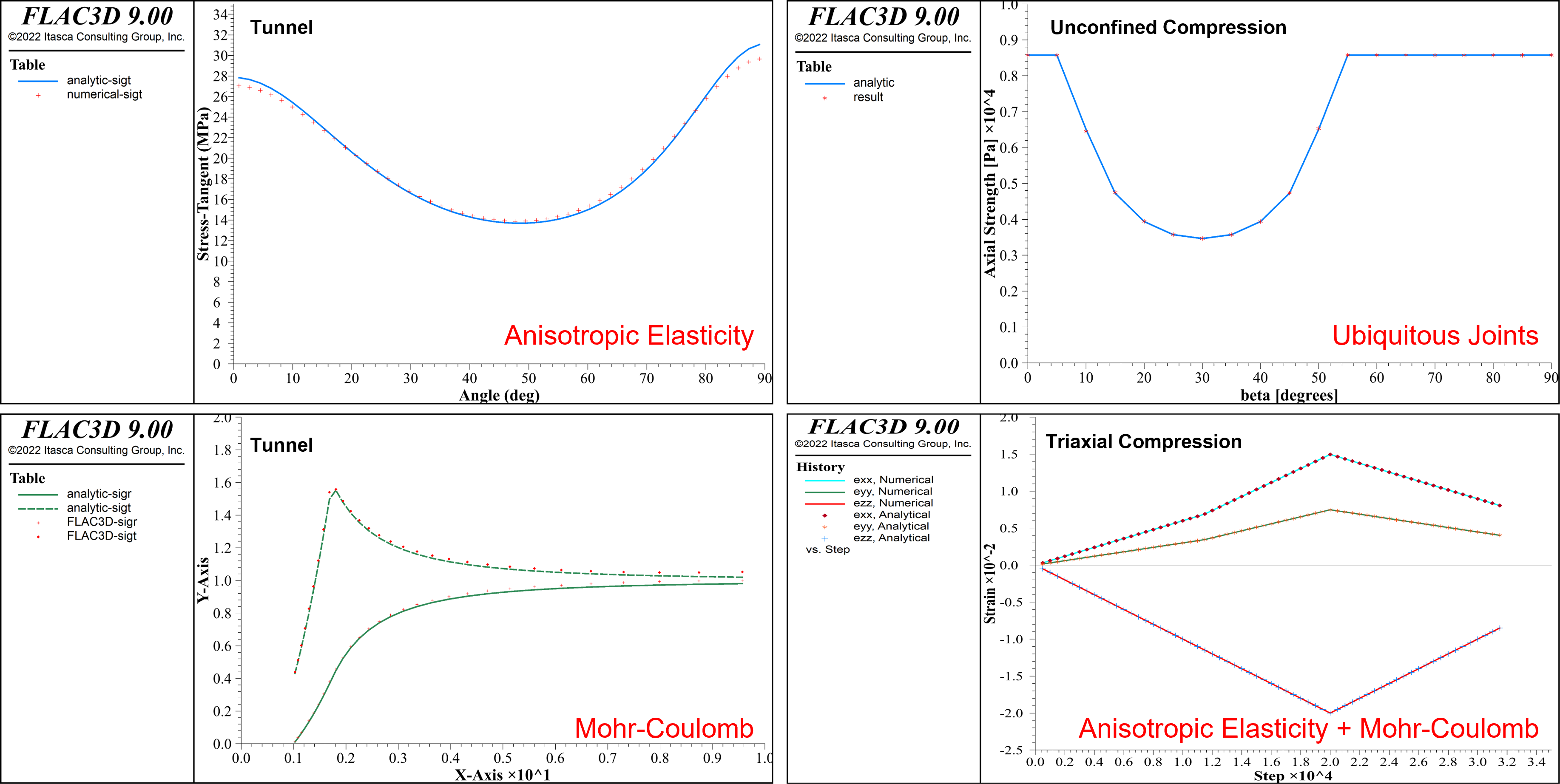With the addition of three new constitutive models, FLAC3D now includes 27 built-in constitutive models, not including any options.
CONCRETE CONSTITUTIVE MODEL
This Concrete model is a plastic-damage model where damage is based on fracture-energy and modulus degradation. Damage may be both extension and compression. It is compatible to Mohr-Coulomb yielding criteria.
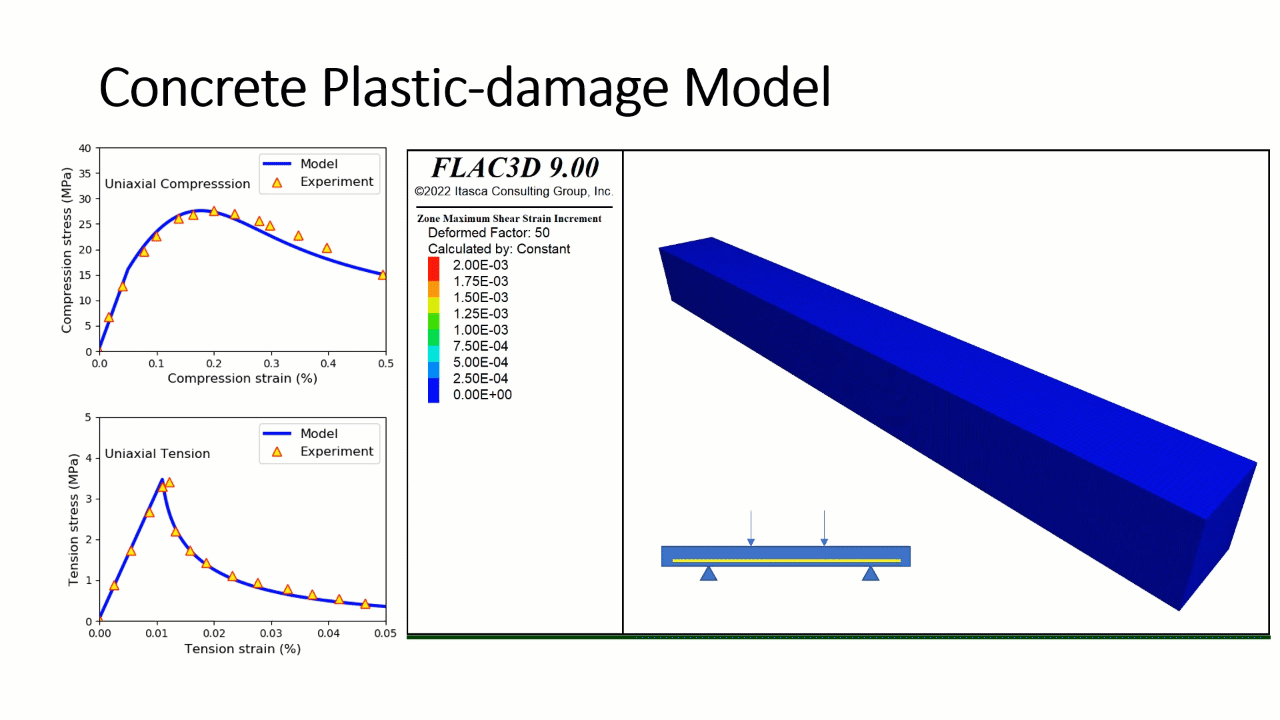
COLUMNAR-BASALT CONSTITUTIVE MODEL (COMBA)
The Columnar-Basalt (COMBA) model accounts for the presence of up to four arbitrary orientations of weakness (ubiquitous joint) in a non-isotropic elastic matrix. The model can be applied to model quadrangular (hexagonal) columnar basalt with cross-joints by specifying that two (three) of the ubiquitous joints are oriented along the column axis, and another along the cross-joints.
The model's elastic behavior accounts for the compliance of the column matrix and that of the joints. The criterion for failure on the planes consists of a strain hardening/softening Coulomb envelope with tension cutoff; the strain hardening/softening behavior can be specified (using a table) for joint cohesion, friction, dilation, and tension. In addition, an amplification factor can be applied to joint dilation that depends on the angle between a set direction (i.e. the column mean axis) and the direction of slip on the joint.
Creep on weak planes is available with the Creep Option.
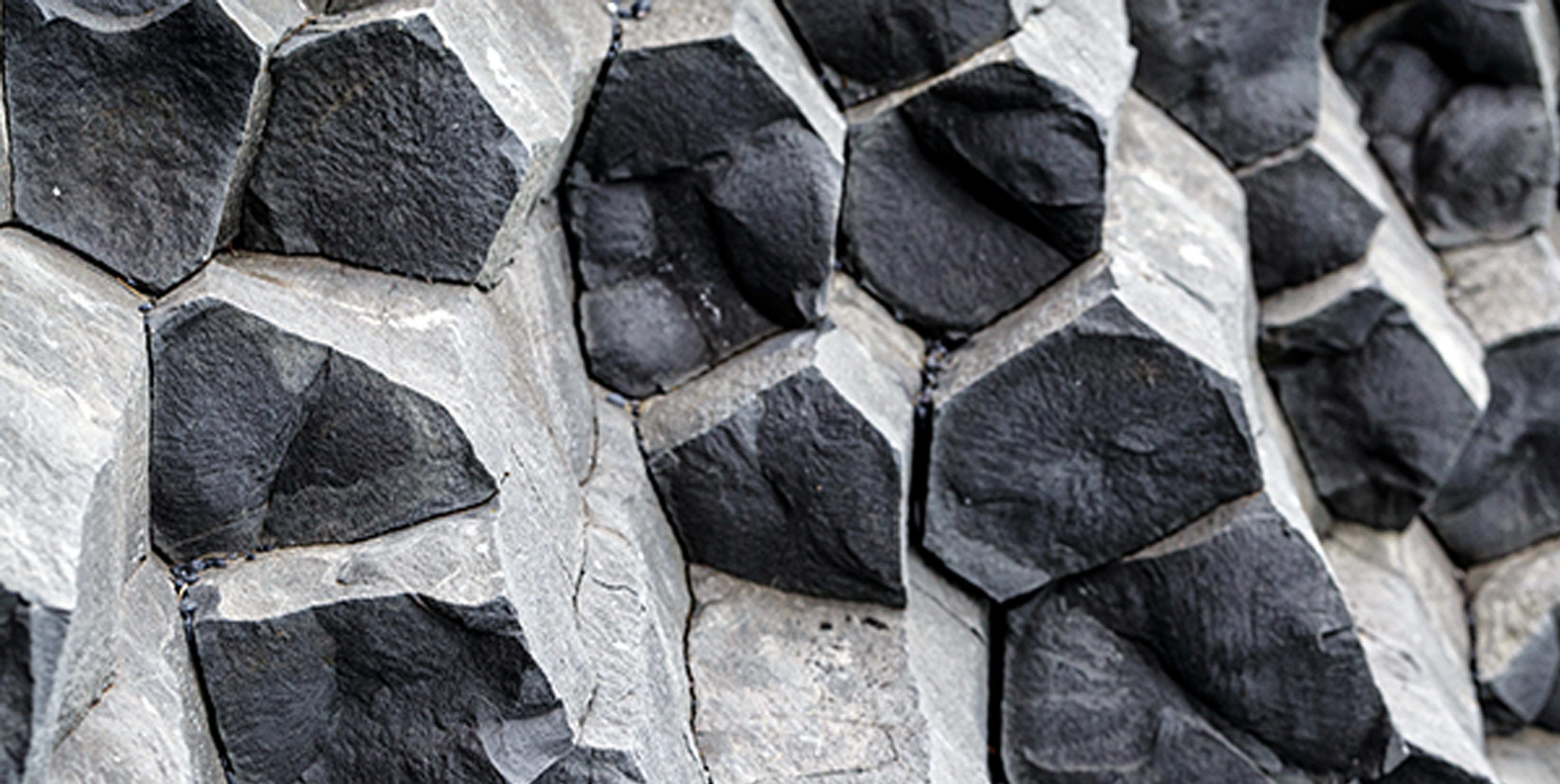
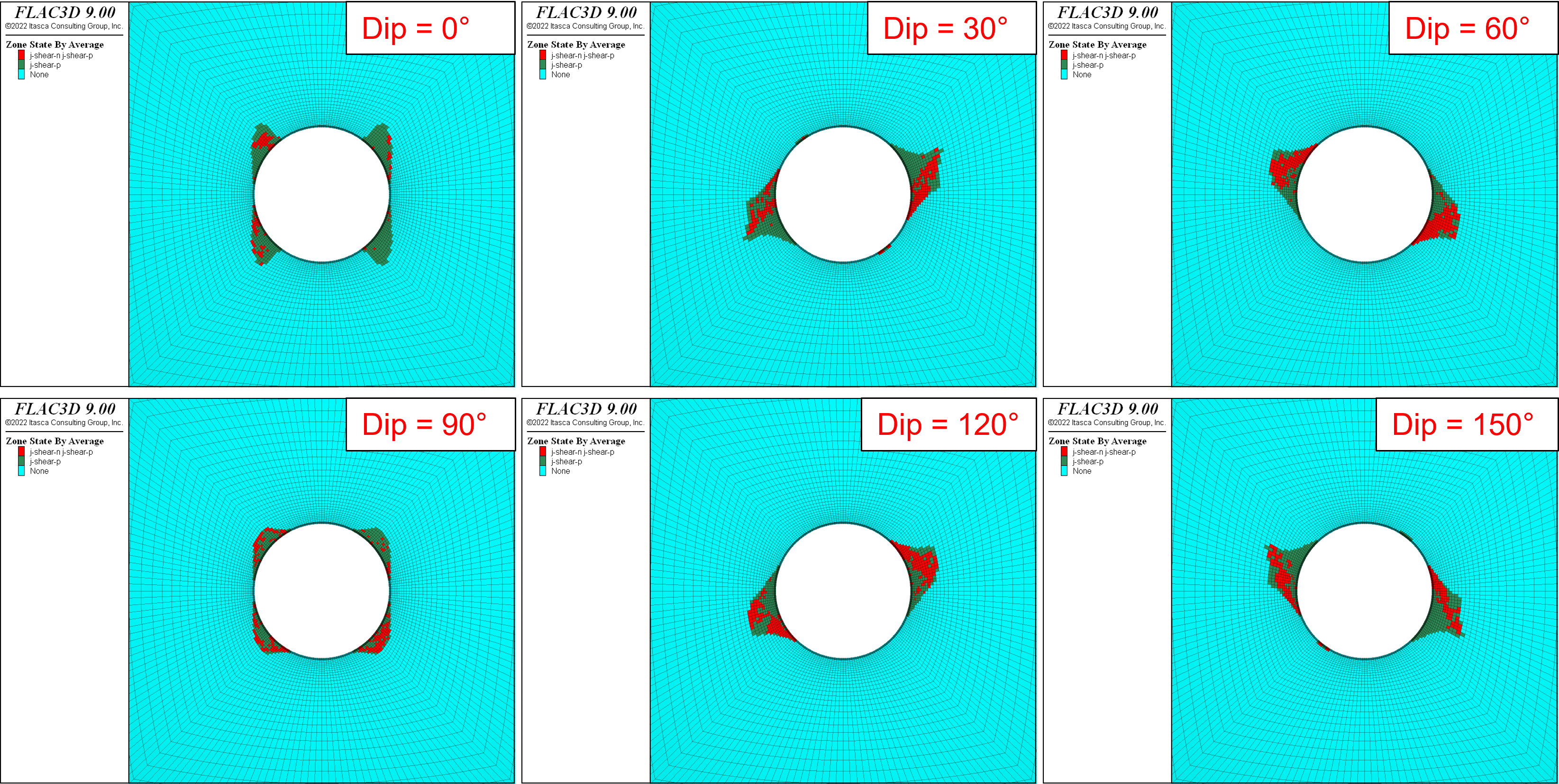
VON-MISES CONSTITUTIVE MODEL
The Von-Mises model has a yield envelope based on a von-Mises criterion. The position of a stress point on this envelope is controlled by an associated flow rule for shear failure. This model is suitable for metal-like materials and includes optional kinematic hardening. This model may be applied to both for solid zones or ground support structural elements.
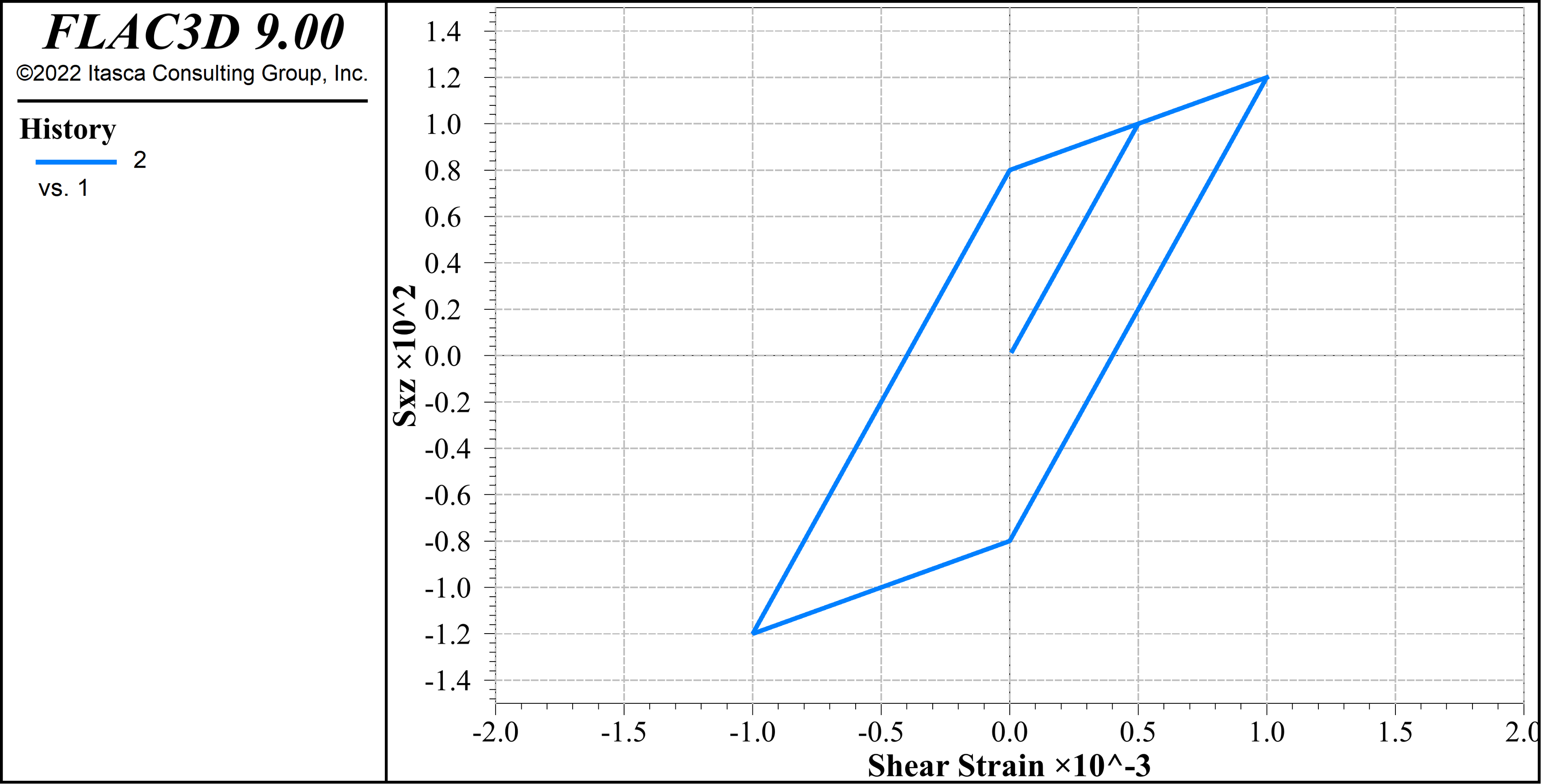
IMPROVED PLASTC-HARDENING (PH) MODEL
The Plastic-Hardening (PH) model is a shear and volumetric hardening constitutive model for the simulation of soil behavior. FLAC3D 9 uses a new implementation based on the new Brick algorithm which considers the unloading-reloading strain-dependent stiffness modulus. This overcomes shortcomings in the previous algorithm which demonstrated poor performance for nested hysteretic loops (e.g., overshooting problem), making the PH model a more practical dynamic model.
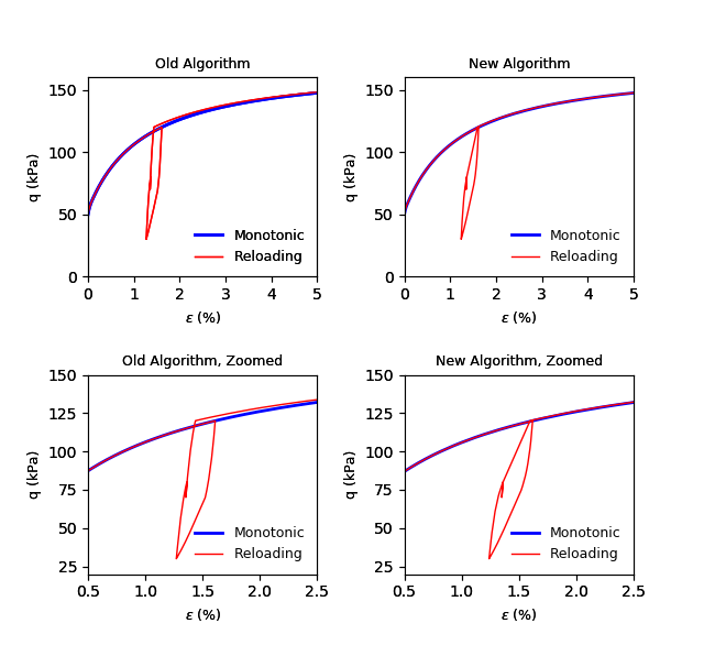
IMPROVED UBIQUITOUS-ANISOTROPIC MODEL (CANISO)
The Ubiquitous-Anisotropic Model combines the Anisotropic (Transversely) Elastic Model and the ubiquitous-joint model. In FLAC3D 9, this model has been improved through the addition of a Mohr-Coulomb matrix option. The joint behavior in both cases is based on a Mohr-Coulomb law.
